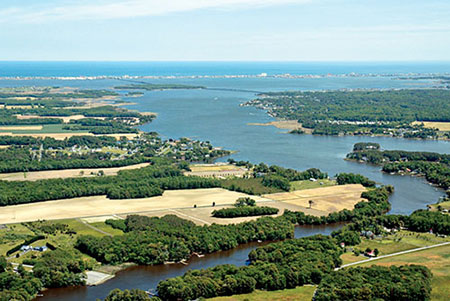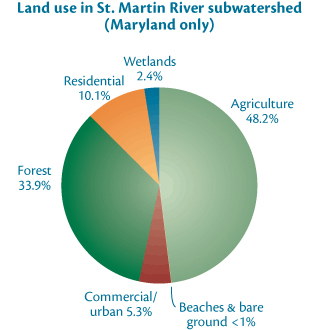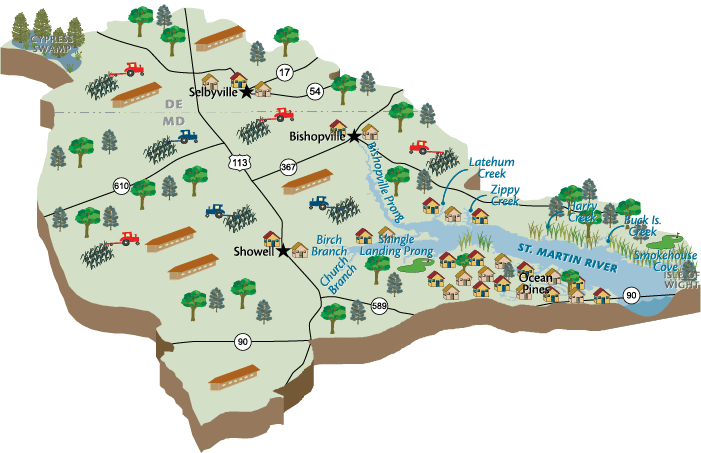 St. Martin River watershed has intensive land use and poor flushing. The region has been a popular residential and vacation spot for many years. The St. Martin River watershed is shared by Delaware and Maryland. Agriculture makes up a large (~48%) part of land use in the region and the landscape is heavily ditched to accommodate crops and homes. Larger towns in the area include Selbyville, Bishopville, Ocean Pines, and Showell. The river itself branches into two prongs--Bishopville and Shingle Landing--and several small creeks.
St. Martin River watershed has intensive land use and poor flushing. The region has been a popular residential and vacation spot for many years. The St. Martin River watershed is shared by Delaware and Maryland. Agriculture makes up a large (~48%) part of land use in the region and the landscape is heavily ditched to accommodate crops and homes. Larger towns in the area include Selbyville, Bishopville, Ocean Pines, and Showell. The river itself branches into two prongs--Bishopville and Shingle Landing--and several small creeks.
 The upper St. Martin River has been highly impacted by human activity. The level of excessive nutrients is high while stream and ditch buffering is low. A combination of poor flushing and heavy nutrient loading from agriculture, industry and development has resulted in the impaired condition. Maryland and Delaware share jurisdiction and responsibility for reducing nitrogen inputs by 31% and phosphorus inputs by 19%. Currently, there is a restoration project occurring that will remove Bishopville Dam, opening up seven miles of fish habitat. It will also restore a pond to a stream and floodplain and establish Atlantic white-cedar wetlands.
The upper St. Martin River has been highly impacted by human activity. The level of excessive nutrients is high while stream and ditch buffering is low. A combination of poor flushing and heavy nutrient loading from agriculture, industry and development has resulted in the impaired condition. Maryland and Delaware share jurisdiction and responsibility for reducing nitrogen inputs by 31% and phosphorus inputs by 19%. Currently, there is a restoration project occurring that will remove Bishopville Dam, opening up seven miles of fish habitat. It will also restore a pond to a stream and floodplain and establish Atlantic white-cedar wetlands.

